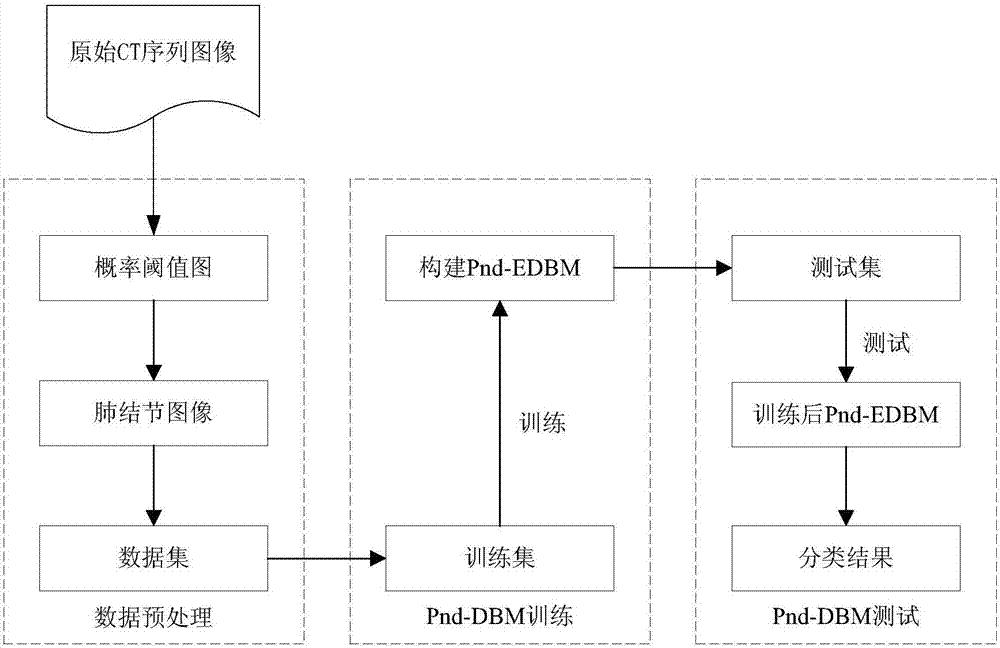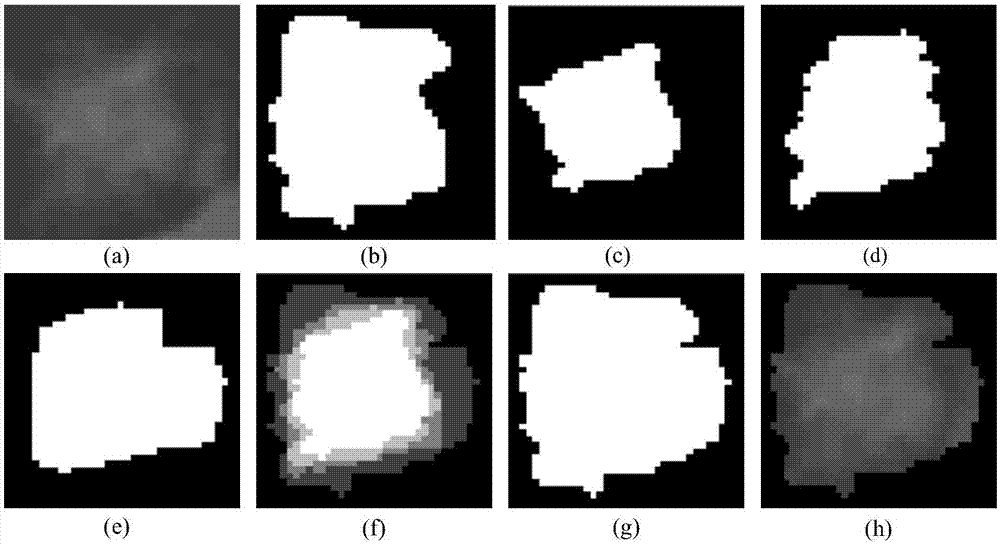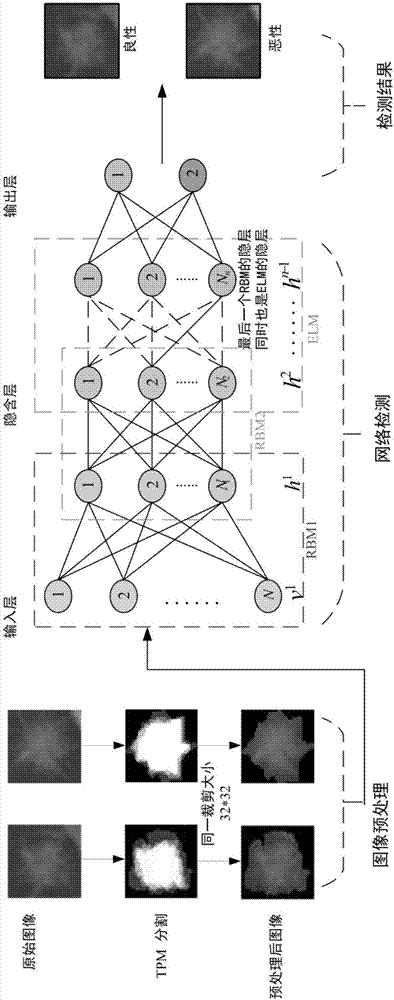Improved deep Boltzmann machine-based pulmonary nodule feature extraction and benign and malignant classification method
A deep Boltzmann machine lung and deep Boltzmann machine technology, which is applied in image analysis, computer parts, character and pattern recognition, etc., can solve the problem of subjectivity, fuzzy definition of nodule edges, and inaccurate description of nodules and other problems to achieve the effect of solving the unbalanced data set
- Summary
- Abstract
- Description
- Claims
- Application Information
AI Technical Summary
Problems solved by technology
Method used
Image
Examples
Embodiment Construction
[0066] The present invention will be described in detail below in conjunction with specific embodiments.
[0067] refer to figure 1 , the implementation process of the inventive method is as follows:
[0068] A method for feature extraction of pulmonary nodules based on deep Boltzmann machine and classification and recognition of benign and malignant by extreme learning machine, comprising the following steps:
[0069] Step A, using the threshold probability map (TPM) method to segment lung nodules from lung CT images to obtain a region of interest (ROI), and crop them into nodule images of the same size and store them in the sample database, as follows: Prepare for feature extraction in one step.
[0070] Step B, design a supervised deep learning algorithm Pnd-EBM to realize the diagnosis of pulmonary nodules, specifically, use the deep Boltzmann machine (DBM) to extract the features with deep expressive ability of pulmonary nodule ROI: two hidden features The superficial ...
PUM
 Login to View More
Login to View More Abstract
Description
Claims
Application Information
 Login to View More
Login to View More - R&D
- Intellectual Property
- Life Sciences
- Materials
- Tech Scout
- Unparalleled Data Quality
- Higher Quality Content
- 60% Fewer Hallucinations
Browse by: Latest US Patents, China's latest patents, Technical Efficacy Thesaurus, Application Domain, Technology Topic, Popular Technical Reports.
© 2025 PatSnap. All rights reserved.Legal|Privacy policy|Modern Slavery Act Transparency Statement|Sitemap|About US| Contact US: help@patsnap.com



